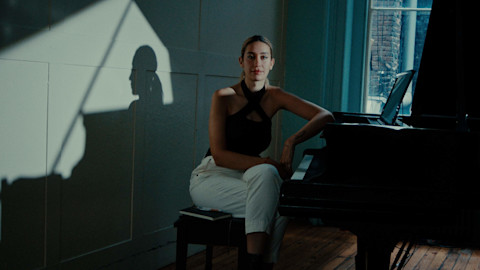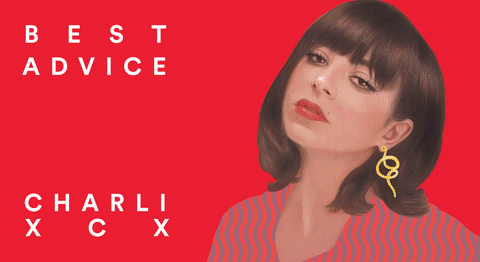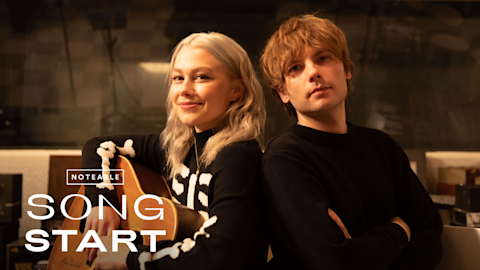The global VP of content for some of the indie world’s most iconic labels wants musicians to always think visually.
For many musicians in an earlier era, the idea of being “image-conscious” was mostly a matter of showing off a cool new look in a flashy video for TV. In this age, thinking visually means something different for artists striving to cut through the noise. As the global VP of content for the Beggars Group, which owns or distributes five of the indie world’s most iconic labels—4AD, Matador, Rough Trade, XL, and Young Turks—Gabe Spierer is involved with the creation of the images that musicians use to connect with fans and stand out across an array of platforms.
Whether they’re working on campaigns and content for established acts like The National, Kamasi Washington, Perfume Genius and Car Seat Headrest or helping newer artists such as Australian rapper Tkay Maidza develop their visual vocabulary, Spierer and his team always seek to make an impression. He spoke to us about the path that led him here and about the strategies that can serve artists in any stage of their career.
Spotify for Artists: Describe what you do and give us the short story of how you got there.
Gabe Spierer: The group is made up of five labels and each of them have their A&R and creative infrastructure. As a shared resource-slash-umbrella entity, Beggars provides each label with different services, depending on what they’re looking for. Certain labels have more in-depth creative infrastructures for video, content, and marketing, and others rely on the shared resource. I work closely with the majority of the labels, creating music videos, session performances, documentaries, social media content—really, any moving visual under the sun.
It’s my job to look at a campaign with the input of the wider team of labels, artists, and managers to assess our needs. Then, we figure out what we need to make in-house and what we need to look out-of-house to accomplish. Lastly, I’m part of securing partnerships and funding for projects that might call for it, often in tandem with our streaming and digital teams.
I’ve always been a huge admirer of the labels—in fact, I interned at Matador when I was in high school, so working in this area with this set of labels is something that I wanted to do from a very young age. When I started in 2008, I originally interviewed for a college radio role and part of that had been managing video promotion—MTV, regional, that kind of thing. Of course, YouTube was also coming into its own. I’m not sure if that was part of their decision but they split that job and created a video-focused role they put me in. I didn’t know much about it, but it was fortuitous timing.
Is there an artist you were a fan of growing up, a story you heard, or an artist you crossed paths with at some point that sparked you to pursue this as a career?
I learned about independent music following paths from Nirvana: Who were they talking about, who were their peers I hadn’t heard of, what labels were those bands on, and what other bands were on those labels as well? I’m 38, so that’s how a lot of people my age discovered independent music. Nirvana to Sonic Youth, or Nirvana to Superchunk and Merge, learning about Sub Pop. Pavement was another huge touchstone when they got big enough to come across my radar as a Rolling Stone subscriber. All those breadcrumbs were a seminal education for me.
What do you look for in an artist you want to work with?
I’m not really tasked with what artists to work with but I come into the conversation fairly early to understand what they’re looking for on the visual side. Traditionally, visual creative starts when the music is done—that’s not soon enough. We need to be thinking about and making this stuff as the music is coming, so we try to have conversations about timelines, aesthetic desires, and where an artist’s head is at.
Sometimes an artist’s team may come to us with a blank canvas—that’s fine, but it’s tougher to hit the mark. Then there are artists who have a sense of what they want and are open to taking help. That’s the most fun.
How has your work been affected, or evolved, in light of the coronavirus pandemic?
My work and that of my colleagues has changed dramatically during the pandemic, with each of us building work-from-home infrastructures to keep up with a workflow that has changed in its specifics, but not slowed.
On the content side, obviously, in-person production has been slowed/halted but we have coped by looking more to animation solutions, remote performance capture on a variety of platforms and even remote music video creation and direction.
With in-person realities modified for the foreseeable future, video content will play an increased role in promoting and marketing our artists and albums
What’s the biggest tool at an artist’s disposal in 2020?
The artist’s most important tool is their ability to use their voice directly in creating their brand, vision, or mythology to make the connection to their audience. There are some artists we have to remind to take advantage of social media platforms. Others teach us how it’s supposed to look. There’s no question that the direct connection with fans is the most important tool at their disposal.
What’s the best advice you have for any artist just starting out? Maintain a sense for all that goes into making this work successful. It’s bigger than a great song or recording. You’re competing with an unbelievable cavalcade of talent, so your presentation goes way beyond the music. You need to ask yourself what you want your music to look like—that’s important now more than ever, based on what we know about how people are consuming things. There has to be a narrative and visuals are a great way to drive that. Thinking about how those things interact, making sure you have answers to questions that go beyond the music, and considering the entire language of a project or an act to present would all be good advice.
—Jason Anderson
Popular Stories
video
How Julia Wolf Made It




